Why I Choose Centerpull Brakes
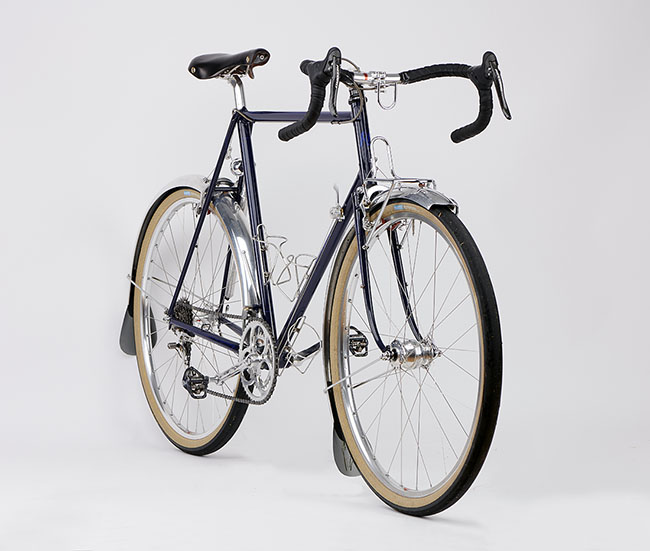
When I spec’d my new bike for this year’s Paris-Brest-Paris (and for our adventures in the Cascade Mountains), I opted for centerpull brakes. I didn’t choose centerpulls out of nostalgia. For the riding I do, they are the best choice.

Why not disc brakes?
It’s undeniable that the best hydraulic disc brakes offer amazing braking power. Isn’t more braking power always better? There is a limit to how much braking power you can use. Once your rear wheel lifts, even with your weight all the way back, you can’t use any extra braking power. A good centerpull brake has just enough power to lift the rear wheel.
If the ultimate braking power is similar, then the choice of brakes comes down to other factors. For me, it’s about the fork rather than the brake itself: Disc brakes feed the braking forces into the left fork blade and flex it backward. If the fork isn’t stiff enough, the bike will self-steer when you brake hard. I once rode a test bike with a Wound Up disc fork that required a quick flick of the handlebars every time I braked hard, to compensate for the fork twist. It became second nature, but many riders might not like this.
Modern disc forks are much stiffer and no longer self-steer. The down side is that this stiffness transmits road shocks that are too big for the tires to absorb. Well-designed steel forks with thin blades flex up to 15 mm (0.6″), just enough to take the edge off these bumps. That’s not just more comfortable, but also faster.
There other reasons why I don’t like disc brakes, but they are relatively minor. One is weight – rotors, calipers and long brake lines all add up (although that can be mitigated somewhat if you use carbon rims.) Discs tend to bite quicker in the rain, but most discs I’ve ridden howled terribly when wet. Discs require more maintenance and care – the hydraulic houses are prone to kinking, and the pads often rub noisily on the rotors, requiring frequent adjustments of the calipers to recenter them. (Thru-axles help with that.)
Disc brakes have their place: They are an excellent choice for bikes with very wide tires. They don’t have to reach around the tire, so the brake’s weight and power are independent of tire width. That is why mountain bikes use them. With front suspension, the stiffness of the fork blades is a non-issue. On modern production bikes with wide tires, disc brakes make sense: They are what is available, and they work well. Simply choose the widest tires you can run, and you’ll get plenty of shock absorption.
For custom bikes with moderately wide tires, I think the main reason riders are tempted by discs is simply this: Most rim brakes for wide tires weren’t very good. But those problems can be overcome.

Why not cantilevers?
Our Rene Herse cantilevers are among the lightest brakes in the world. At 75 g per wheel, they weigh far less than most racing brakes. We used them on the J. P. Weigle for the Concours de Machines Technical Trials in France. They brake very well, too – as I could confirm when descending from the mountains in pouring rain during the Concours.
We’re very proud of our Rene Herse cantis, but I still prefer our centerpulls for the riding I do. The inherent drawback of all cantis is the location of the pivots on unsupported section of the (relatively thin) seatstays and fork blades. When you brake, the brake cable pulls upward, which tends to splay the brake posts outward. In addition, the pads are dragged along by the rim, which also tends to twist the brake. On the front, these two factors reinforce each other.
The fork blades twist, and this changes the angle at which the brake pads hit the rim. That is why you toe in the pads, which reduces the effect. But there is still a non-linearity as the pad surface increases as you brake harder.
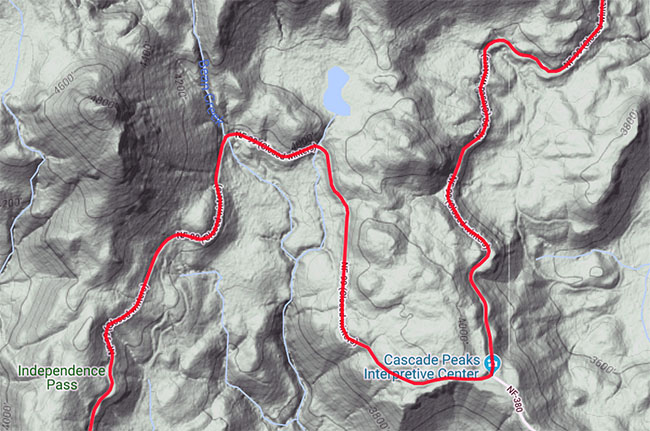
For most rides, it’s not a big deal, but when you brake deep into turns during twisty mountain descents, a brake that responds linearly to your input gives more confidence. And in the Cascade Mountains, we have plenty of twisty descents. When curve follows upon curve, when your instincts take over and your bike feels hardwired into your brain, then you want a brake that responds with linear force to your inputs. A brake where each increment of lever pull results in the same incremental increase of braking force.
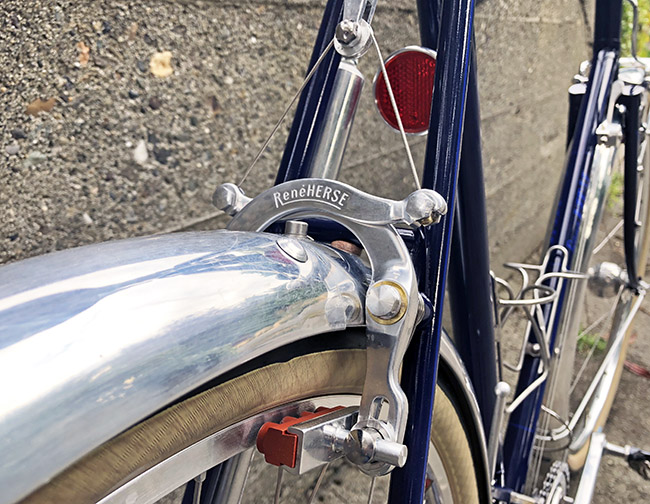
That is where centerpulls come in. They eliminate the twisting problem by locating the pivots above the rim, where the stays (rear) and fork blades are well-braced. The result: There is no twist, the pad angle doesn’t change, and the brake action is linear and easy to modulate.
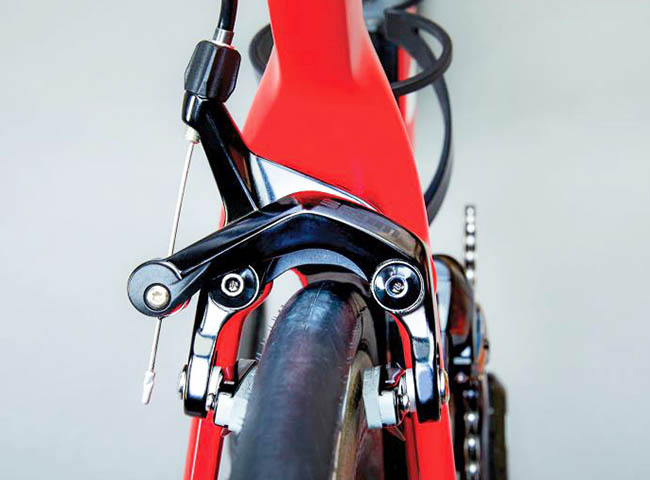
Modern racing brakes use the same pivot location – only the upper arms are more complex to eliminate the need for a straddle cable. Many of the best bikes now have direct-mount brakes, where the pivots are part of the frame, which further reduces flex (and weight). When we reintroduced direct-mount centerpull brakes, they were seen as oddballs. Today, they have become the norm.

Straddle cables have fallen from favor because they can cause lost motion. A thick straddle cable, as in the photo above, tends to curve over the straddle cable yoke. When you pull on the brake lever, the first part of the lever travel only pulls the straddle cable straight, without actually slowing you down.
Lever travel limits the power of all brakes: In theory, you could make the brake more powerful by increasing its mechanical advantage, but then the pads travel less for each increment of lever travel. And you can only pull the lever so far until it hits the handlebars. If you are wasting some of the lever travel to pull the straddle cable straight, you have less left over for the actual braking. You have to design your brake with less mechanical advantage – less braking power. And/or you need to set the pads closer to the rim, which increases the chance that they’ll rub if your wheel goes slightly out of true or if your brake goes slightly out of adjustment. (That is why discs tend to rub: They have a lot of mechanical advantage, so the gap between disc and rotor has to be tiny.)
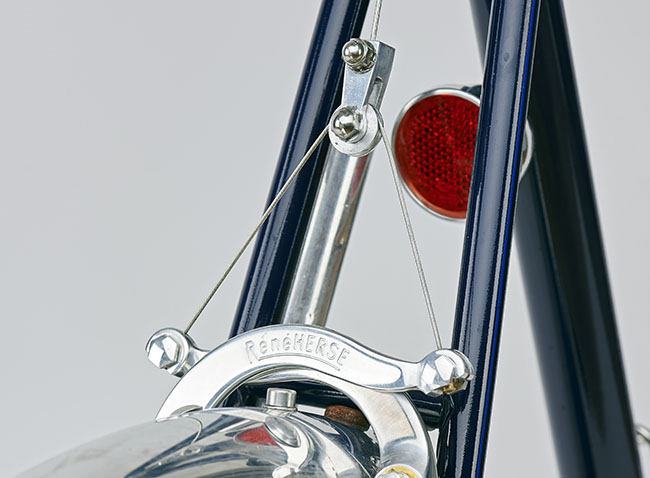
There is a solution: Use a thinner straddle cable that doesn’t bow. The straddle cable transmits less force than the brake cable, so a thinner cable works fine. (We use a derailleur cable, so replacements are easy to find.) The thinner cable bends smoothly around the straddle cable yoke (above). There is no lost motion when you apply the brake. Without the risk of bottoming out the brake lever, we had the freedom to design the Rene Herse brakes with more mechanical advantage. That way, we get as much brake power as a very good mechanical disc brake.
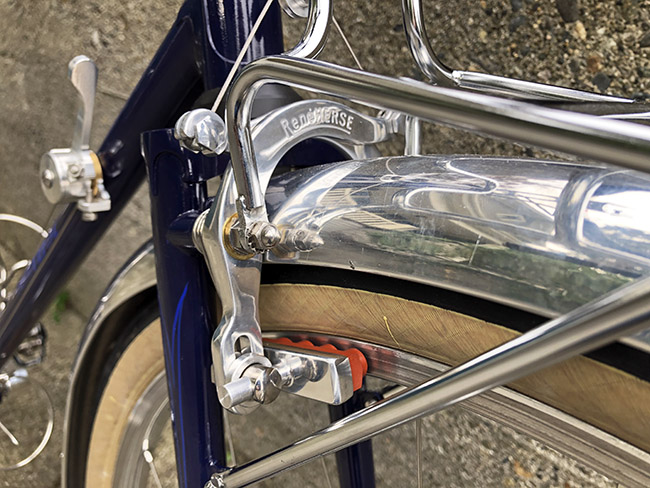
All the mechanical advantage in the world doesn’t do much if the brake flexes instead of squeezing the pads. Brake flex means less power for slowing the wheel. Most of the flex occurs between the pivots and the pads: The brake twists when the pads are dragged along by the rim. The upper arms – above the pivots – can be thin: They are stressed mostly in one plane (up/down). That is why centerpull brakes can be superlight: Their pads are much closer to the pivots than those of old-fashioned sidepull and dual-pivot brakes.
Not all centerpull brakes are created equal. The arms of our Rene Herse centerpulls have been optimized using Finite Element Analysis. We forge the brake arms for optimum strength, so we can make them thinner and lighter than CNC-machined arms. In fact, Rene Herse centerpulls are among the lightest brakes out there.
All our brakes are now available with titanium eyebolts for the pads. The centerpulls weigh just 137 g (per wheel, with pad holders, but without pads*). That is the same as a direct-mount Dura-Ace brake, even though the Rene Herse has room for 42 mm tires and fenders, while the Dura-Ace barely clears 28 mm tires (without fenders).
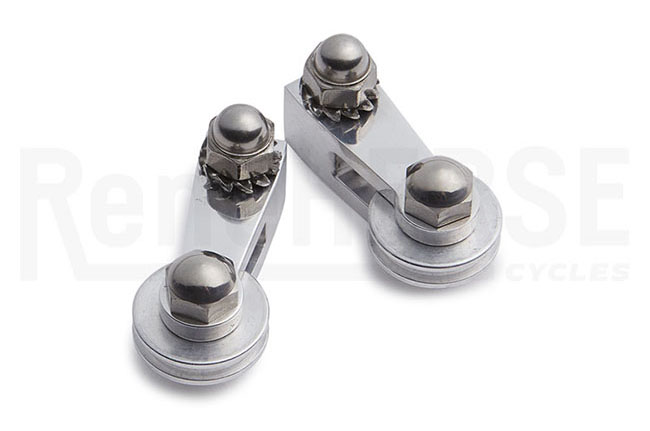
For the titanium version of our brakes, we’re also using a titanium lower bolt for our Straddle Cable Yoke to save further weight. (The upper bolt is always made from super-strong CrMo steel, since it secures the brake cable.) The steel-bolt version of the brake remains available as a more affordable option.
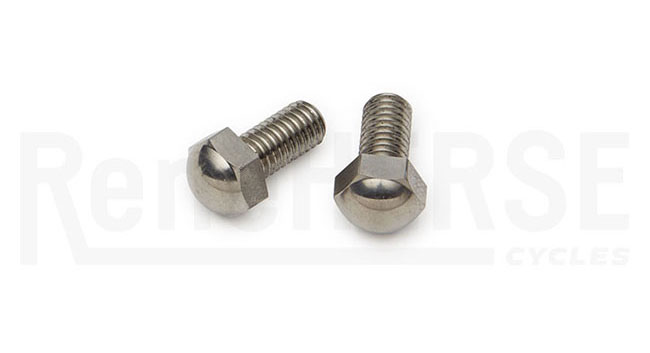
The new custom-made titanium bolts are available separately, too. They are great for attaching bottle cages and fenders. (Please don’t use them on racks, where the full strength of steel bolts is needed!)

Light weight, excellent power, great modulation, low maintenance, and the ability to use flexible fork blades for comfort and speed – those are the reasons why I chose Rene Herse centerpull brakes for my new bike.
Further reading:
- More information about Rene Herse brakes
- The full story of my new bike is in the Autumn 2019 Bicycle Quarterly
* Rather than get into a competition for the lightest (meaning: thinnest) brake pads, we weigh our brakes without pads. That way, we can use thick brake pads that last three times as long as the thin pads of most modern brakes. If you want ultralight pads, you can cut them down (or run well-used pads).


